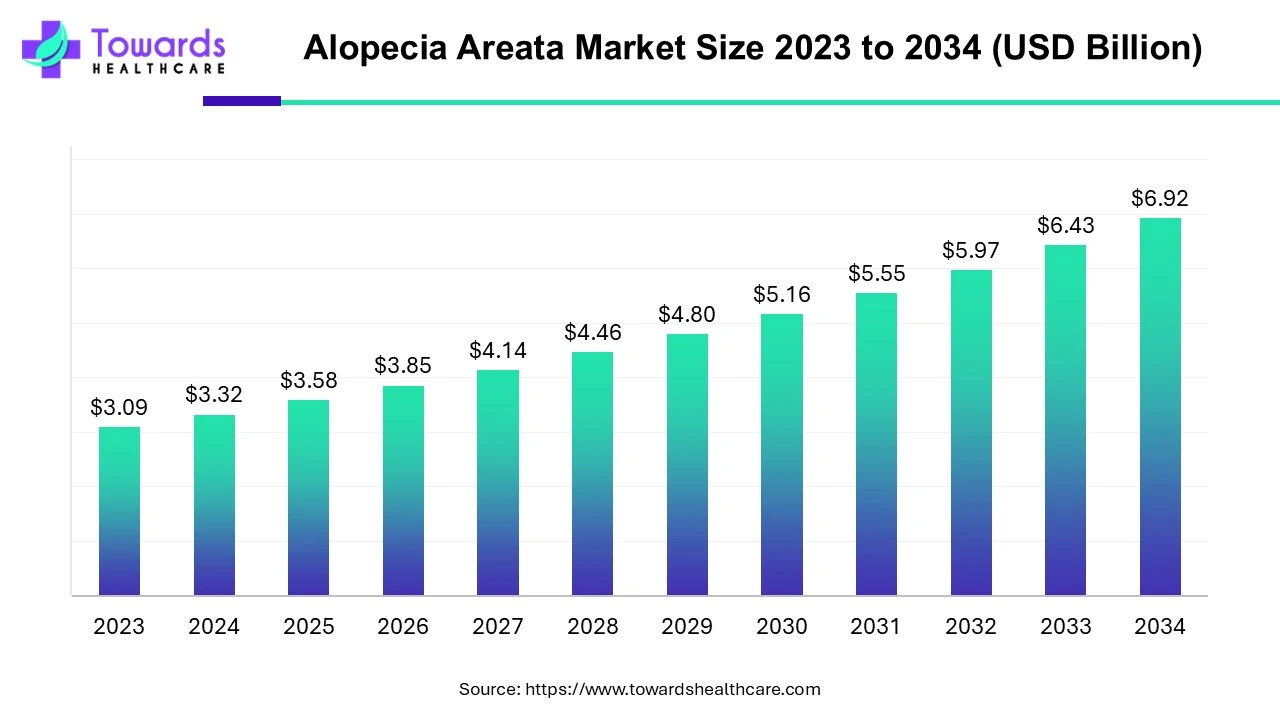Exploring Alopecia Areata Market Growth, Trends and Treatment Insights
The global alopecia areata market is projected to grow from USD 3.32 billion in 2024 to USD 6.92 billion by 2034, with a compound annual growth rate (CAGR) of 7.6% during this period. This growth reflects rising demand for effective treatments and innovations within the field.

Key Market Highlights
- Medication Dominance: Medications accounted for 70% of the market share in 2023.
- Preference for Topical Treatments: Topical applications, known for their convenience, held a significant 55% of the market share in 2023.
- Role of Dermatology Clinics: Dermatology clinics emerged as leading end users, contributing 58% of the market share in the same year.
Globally, approximately 2% of people will experience alopecia areata at some point in their lives. The rising prevalence of the condition has spurred the demand for advanced and accessible treatment options.
Factors Driving Market Growth
- Aging Population: Older individuals are more susceptible to hair loss, which is boosting the market.
- Impact of Medications: Hair loss is a common side effect of certain treatments, such as chemotherapy, further driving the need for solutions.
- R&D Advancements: Investments in novel drug discoveries and delivery methods are fueling growth.
- Increased Funding: Governments and private organizations are allocating resources to research and initiatives to improve treatment access.
Understanding Alopecia Areata
Alopecia areata is an autoimmune condition that causes hair loss in small, round patches on the scalp, face, or other parts of the body. In severe cases, it can lead to total hair loss on the scalp (alopecia totalis) or the entire body (alopecia universalis). While the exact cause is unknown, the condition arises when the immune system mistakenly attacks hair follicles.
Though not physically harmful, alopecia areata can significantly impact an individual’s emotional and psychological well-being. This highlights the importance of treatments, which range from corticosteroid injections and topical treatments like minoxidil to immunotherapy.
Role of AI in Transforming the Alopecia Areata Market
Artificial Intelligence (AI) is reshaping the alopecia areata landscape by enabling:
- Early Diagnosis: Machine learning and deep learning algorithms improve early detection and risk assessment.
- Innovative Research: AI accelerates the identification of therapeutic targets and optimizes clinical trials.
- Personalized Medicine: Tailored treatment plans based on genetics and lifestyle enhance outcomes.
- Improved Patient Engagement: AI platforms offer real-time monitoring and feedback, ensuring adherence to treatment regimens.
The integration of AI promises to revolutionize treatment strategies, enhance patient outcomes, and accelerate market growth.
Diverse Types of Alopecia and Their Impact
Alopecia areata varies in severity and presentation:
- Alopecia Universalis (AU): Complete loss of hair on the body.
- Alopecia Totalis (AT): Total loss of hair on the scalp.
- Alopecia Ophiasis (AO): Hair loss focused on the back and sides of the head.
AU and AT represent 7–30% of cases, with lower chances of hair regrowth compared to standard alopecia areata. The condition typically manifests before the age of 30, with about 20% of cases occurring in children.



